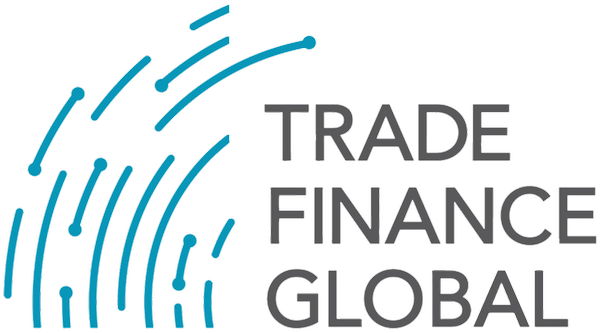- Banks are grappling with fragmented regulations and inconsistent client relationships.
- These hinder unified, cross-border services.
- Innovation and collaboration help banks deliver consistent, client-centric experiences.
Banks operating today are facing a myriad of challenges, from tariff adaptation to tech adoption. Multinational institutions must further grapple with changing regulations in a number of jurisdictions, on top of evolving industry standards in the payments and risk-management sphere.
Keeping track of all the moving parts would be impossible without solutions providers, which help banks manage their operations from compliance to pricing strategies.
The cross-border challenge
Banks with cross-border or multi-geography operations face a range of structural and client-side challenges that stem from regulatory, operational, and technological fragmentation.
One of the biggest hurdles is regulatory inconsistency. While global frameworks such as Basel III, FATF standards, and privacy regulations like the EU’s GDPR set broad principles, the pace and nature of local adoption vary widely. This unevenness means that what is permissible or reportable in one market may not be in another, making compliance complex and resource-intensive.
In some cases, contradictory rules (for example, between data localisation mandates and anti-money laundering obligations) force banks to create manual workarounds just to maintain service continuity.
Another major issue is the fragmentation of client relationships. A corporation with multi-country operations often has multiple banking relationships, accounts, and rate structures that are all managed under different systems and processes. There is no unified view of that client’s total relationship with the bank.
As a result, pricing, revenue recognition, and risk assessment are inconsistent across markets. From the client’s perspective, this means dealing with several account managers, duplicating documentation, and receiving non-standardised statements or rate calculations for similar services.
This dispersed relationship model creates inefficiencies and diminishes client trust. Banks struggle to offer consistent experiences or tailored propositions because information about a corporate’s full engagement is siloed across entities and geographies. This also makes deal negotiation and revenue optimisation difficult, as the bank lacks a single, consolidated view of the client’s global footprint.
Cross-border payment frictions, shrinking correspondent banking networks, and data sovereignty restrictions further complicate the picture, especially when clients expect the same speed, transparency, and compliance assurance globally. Ultimately, these fragmented systems and frameworks make it difficult for banks to deliver a unified, client-centric experience. For multinational corporates, this translates to complexity, inconsistency, and higher costs in managing global banking relationships.
Finally, banks are increasingly under pressure to capture their fair share of revenues. According to BCG, while revenues in financial services are rising, many banks are struggling to fully benefit from them, highlighting how operational and client-side challenges directly impact profitability and growth.
Innovation acceleration
When it comes to tariffs and fragmentation, banks don’t need a silver bullet; they need an intelligent spine. In a world of changing tariffs, trade skirmishes, and patchwork regulation, banks must look to innovation like AI to improve resilience. This means systems that see, decide and adapt before human committees have time to convene.
Machine-learning models can provide early-warning signals in cash flows and trade corridors and formulate prices, risks, and fees dynamically. Retrieval-augmented governance finds the right rule, from the right jurisdiction, at the right moment, simplifying operations for multinational banks. The result is not a single “fix” but a rewired enterprise: cleaner data, fewer hand-offs, and client teams armed with copilots that bolster day-to-day operations.
For example, some banks are investing in centralised risk and compliance analytics, enabling them to identify exposures across geographies and adapt pricing or credit terms dynamically. They are also increasingly coordinating multi-country client engagement, reconciling fragmented account structures, and standardising reporting where possible to maintain a consistent client experience.
At the same time, banks are rethinking their operational structures to handle new tariffs and local regulatory nuances, ensuring they can continue cross-border payments and manage liquidity efficiently. This is coupled with improved scenario planning – modelling impacts of changing tariffs or sanctions on client portfolios, supply chains, and cash flows to mitigate risk proactively.
Over the past year, banks have faced a perfect storm of complexity: fluctuating tariffs and fragmented regulations have driven pricing volatility and margin pressure, and multinational clients with multiple accounts and banking relationships have found it difficult to get consistent service. Operational costs have risen due to duplicated processes and manual workarounds, cross-border risk management has become more intricate, and legacy systems have strained banks’ ability to get real-time visibility across geographies. Together, these factors have forced banks to rethink how they manage client relationships, risk, and operations in a more agile, coordinated, and resilient way.
Higher risk, lower access
At the same time, global challenges such as those outlined above are not only making it harder for corporates to operate but also limiting their access to much-needed liquidity. This is often because some of the sectors most in need of financing – such as small and medium enterprises (SMEs) – are the ones perceived as high risk, inhibiting their access to capital.
Expanding access to finance in these higher-risk segments demands finer instruments, not blunt bans. For example, the SunTec Xelerate platform gives banks the capability to make precise financing decisions through a composable pricing and billing layer with AI-assisted risk lenses.
Through the platform, relationship teams can run region-specific simulations in a governed sandbox, modelling risk-adjusted returns, testing fee structures, and configuring terms against local rules. This enables them to evaluate risk profiles and opportunities accurately before making binding offers. This could help banks gain the confidence to explore sectors perceived as higher risk in a controlled environment.
The result is a disciplined opening-up: underserved corridors become bankable, client relationships deepen, and portions of the trade-finance gap close without relaxing controls or surrendering yield.
Managing collaboration
In an increasingly uncertain global environment, many banks – from small regional institutions to global players – are looking towards collaboration to share the burden.
Structuring and collaboration enable banks to enter new client segments and markets by leveraging complementary capabilities and shared risk. For example, one of our customers, a bank, partnered with an enterprise resource planning (ERP) solution provider to embed financial services directly into the ERP platform. This allowed the bank to offer working capital funding and other services to the ERP provider’s end customers, effectively reaching a new segment of corporate clients.
To manage the complex revenue-sharing arrangement, which included tiered, threshold-based splits between the bank, the ERP provider, and internal teams, the bank used an intelligent revenue management product. This gave the bank flexibility and transparency, ensuring fair revenue distribution, fostering internal collaboration, and supporting a scalable model.
AI in deals
Beyond solutions providers, banks are increasingly turning to AI to simplify and accelerate complex deal-making. According to a McKinsey survey, 46% employees in of financial services institutions regularly use generative AI, reflecting the growing adoption of AI across industries.
By combining AI with workflow automation, banks can identify optimal pricing strategies, reduce manual intervention, and speed up deal approval, freeing up time for relationship managers to focus on higher-value client interactions.
Solutions providers play a key role by embedding AI capabilities into banks’ platforms, enabling data-driven insights at scale and improving both deal outcomes and operational efficiency. AI can do more than just speed up manual processes. AI enhances decision quality, uncovers hidden revenue opportunities, and ensures that banks can respond quickly to market dynamics and client needs.
AI is transforming transaction banking by enabling smarter, faster, and more efficient deal-making. It allows banks to simulate deals and optimise pricing in real time, while automating end-to-end workflows to reduce manual effort and errors.
By analysing client behaviour, transaction history, and market trends, AI provides deeper insights that can be used to create tailored offers and cross-selling opportunities. At the same time, it supports compliance and risk management by flagging unusual patterns, ensuring transactions remain transparent and compliant.
Overall, AI’s greatest potential lies in enabling banks to respond quickly to market changes, deliver client-centric deals, and uncover previously untapped revenue streams.




























